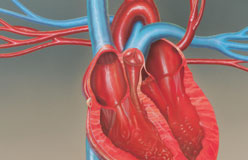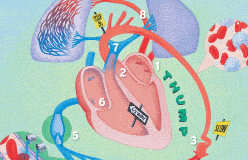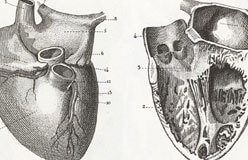Your heart is a pump, and it’s a lot like the pumps that people manufacture for industrial and mechanical purposes.
Any pump needs a source of energy to function. If you work a pump with your hands, that pump is powered by mechanical energy. Or you can trigger it with electricity, which is how your heart works.
The tiny electric sparks your heart makes cause cardiac (heart) muscles to “tense up,” or contract. The contractions, or heartbeats, are steady and regular, thanks to a built-in timer. If your heart’s timer stops ticking, you can get an artificial one. It’s a small box called a pacemaker.
Your heart is triggered by electricity, but it also has moving parts: valves open and shut, muscles squeeze and push, and blood flows through expandable tubes.
The heart pump’s one job is to control the flow of blood. It pumps blood uphill against gravity and keeps it flowing to all parts of the body.







